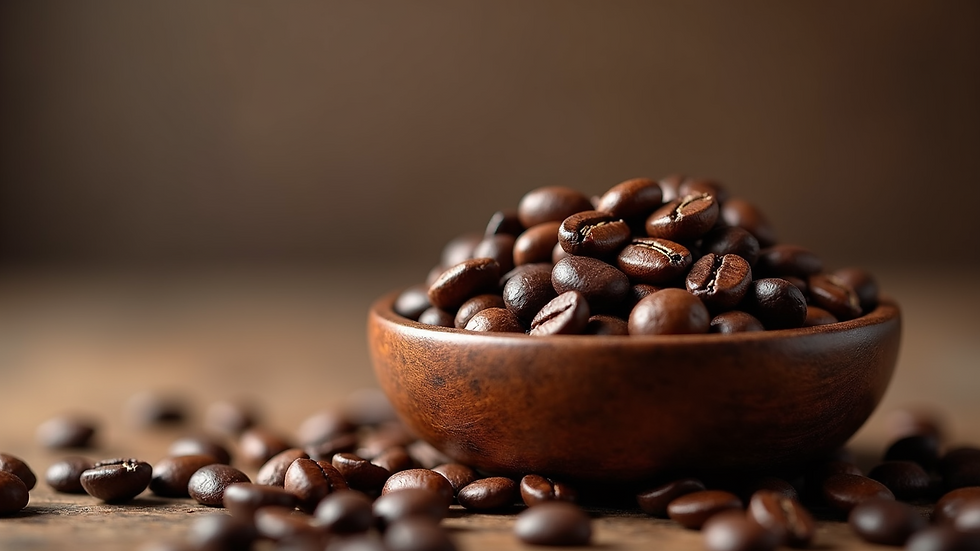What Defines High-Quality Espresso?
- Bisser Stoyanov
- Oct 13
- 4 min read
Espresso is more than just a coffee drink - it is an art form, a ritual, and a science all rolled into one small cup. But what exactly defines a premium espresso? How can you tell if the espresso you are drinking is truly exceptional? This guide will walk you through the essential elements that make an espresso stand out, from the beans to the brewing process, and even the subtle rules that baristas follow to achieve perfection.
Understanding the Premium Espresso Guide: Key Elements
To appreciate a premium espresso, you need to understand the factors that influence its quality. These include the coffee beans, the grind size, the water temperature, the pressure, and the extraction time. Each element plays a crucial role in the final taste and texture of the espresso.
Coffee Beans: The foundation of any espresso is the coffee bean. High-quality beans are freshly roasted, ideally within the last two weeks. Arabica beans are preferred for their complex flavours, but some blends include Robusta for added crema and strength.
Grind Size: Espresso requires a very fine grind, almost powdery, to allow the water to extract the flavours properly within a short time.
Water Temperature: The ideal water temperature for espresso extraction is between 90-96°C. Too hot or too cold water can ruin the taste.
Pressure: A consistent pressure of 9 bars is standard for espresso machines to push water through the coffee grounds effectively.
Extraction Time: The shot should take about 25-30 seconds to pull. Too short or too long extraction can lead to sour or bitter flavours.
When all these factors align, the result is a rich, balanced espresso with a thick crema on top.

The Role of Freshness and Storage in the Premium Espresso Guide
Freshness is critical when it comes to espresso. Coffee beans start to lose their flavour and aroma soon after roasting. To maintain the quality, beans should be stored in airtight containers away from light, heat, and moisture.
Buy Whole Beans: Grinding beans just before brewing preserves the essential oils and flavours.
Use Within Two Weeks: For the best taste, use roasted beans within two weeks.
Proper Storage: Use opaque, airtight containers and keep them in a cool, dry place.
Grinding too far in advance or using stale beans will result in a flat, dull espresso lacking the vibrant notes that define a premium cup.

What is the 2 1 Rule for Espresso?
The 2 1 rule is a simple guideline used by baristas to balance the coffee dose and the espresso yield. It refers to the ratio of coffee grounds to the amount of espresso extracted.
2 grams of coffee for every 1 gram of espresso: For example, if you use 18 grams of coffee, you should aim for 36 grams of espresso in your cup.
This ratio helps achieve the right strength and flavour balance.
Adjusting the ratio can tweak the taste - a higher ratio yields a stronger, more intense espresso, while a lower ratio produces a lighter shot.
Following the 2 1 rule ensures consistency and helps avoid under-extraction (sour taste) or over-extraction (bitter taste).
The Importance of Technique and Equipment in Crafting Espresso
Even with the best beans and guidelines, the barista’s technique and the espresso machine’s quality are vital.
Tamping: Pressing the coffee grounds evenly and firmly in the portafilter ensures uniform water flow.
Machine Quality: A reliable espresso machine with stable temperature and pressure control is essential.
Cleaning and Maintenance: Regular cleaning prevents old coffee oils from spoiling the flavour.
Investing in a good grinder and espresso machine, and mastering the technique, can elevate your espresso from average to exceptional.

How to Identify a High-Quality Espresso in Your Cup
When you sip your espresso, several sensory clues indicate its quality:
Appearance: A thick, golden crema on top is a good sign.
Aroma: Fresh espresso has a rich, inviting smell with hints of chocolate, nuts, or fruit.
Taste: The flavour should be balanced - not too bitter, sour, or watery. Look for complexity and smoothness.
Body: A premium espresso feels full-bodied and velvety on the palate.
Aftertaste: The finish should be pleasant and lingering, without harshness.
If your espresso meets these criteria, you are likely enjoying a high-quality espresso.
Elevate Your Espresso Experience
Making or choosing a premium espresso is about attention to detail and appreciation of the craft. Whether you are brewing at home or ordering at a café, understanding these elements will help you enjoy every cup to its fullest.
Experiment with different beans, grind sizes, and extraction times. Invest in good equipment and keep it well-maintained. And most importantly, savour the rich flavours and aromas that make espresso a beloved beverage worldwide.
By following this premium espresso guide, you can confidently identify and create espresso that delights your senses and satisfies your coffee cravings.




Comments